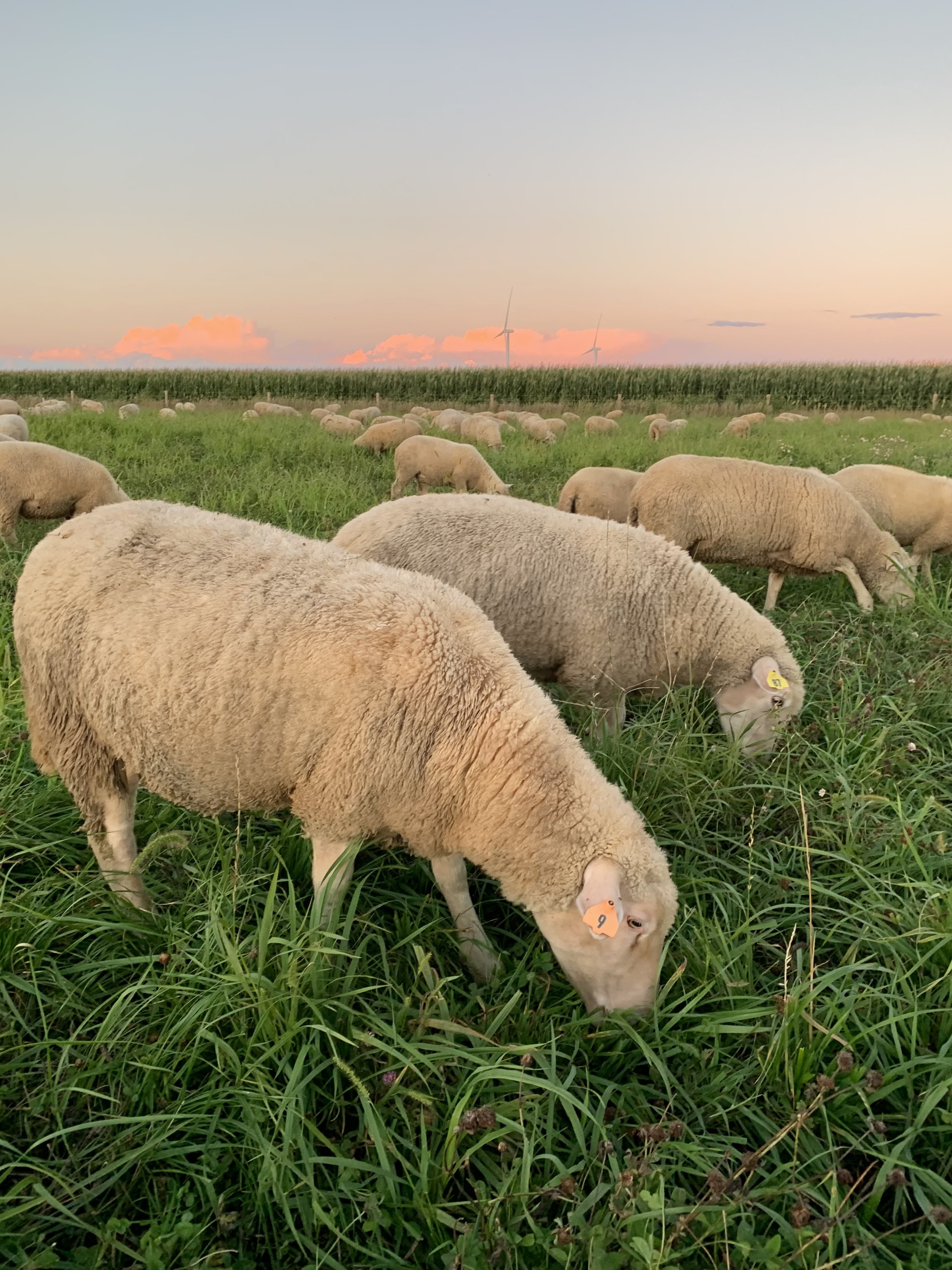
What is regenerative agriculture?
And how does it mitigate climate change?
Regenerative agriculture is regenerating the soil and water and carbon systems, working synergistically with nature. Bringing animals back to the land through rotational grazing is one of the major key practices to regeneration.
We purchase wool from iowa farms that regenerate land,and carbon and water cycles.
Sheep bio-mimic bison
Iowa is ground zero - the most altered ecosystem in the world. Iowa was once entirely diverse tall grass prairie and oak savannas teeming with life, grazed by millions of bison and where grassland birds annually migrated to nest. Today it is on its way to becoming a desert due to industrial agriculture. 150 years ago, 30 million bison roamed North America until a mass slaughter began in the 1800’s to colonize the west and remove the Indigenous people from their ancestral land by removing their food source. By the 1880’s, an estimated 1,000 bison remained.
These millions of bison moved across the tallgrass prairie, including what is now Iowa, moving along and never over grazing. It was the perfect ecological balance. Today, smart graziers mimic what the bison did using smaller ruminants like cattle, sheep and goats. The animals graze in pasture paddocks and are moved from one paddock to the next frequently depending on the height of the forage. This managed rotational grazing greatly improves soil health, stores more carbon from the atmosphere, restores the water cycle, keeps the animal healthy and happy and creates overall resiliency.
We procure our wool from Iowa sheep farms that help save the grassland birds!
Rotational grazing mitigates global warming by allowing the growing plants to photosynthesize and take in carbon, bringing it down into the plants roots and storing it in the soil. It also positively affects the water cycle which helps cool the planet from global warming. The ruminant (bison/sheep/cow/goat) is the tool to help the plant continuously grow and capture more carbon and restore the water cycle. In addition, this type of grazing uses no extra water and no fossil fuels.
And if regenerative agriculture can’t get any better, it also helps save the grassland birds. Almost all of Iowa was formerly tall grass prairie prior to colonization. For centuries, grassland bird species have migrated here to nest, flying from as far as Argentina. Because of the mass conversion to cropland over the last century, grassland bird species are the most endangered birds today with a 53% reduction in their population - the biggest bird decline ever. You can help increase these endangered bird populations by supporting farms that convert cropland to perennial grasslands and by purchasing products that support those farms.
Today, over 93% of Iowa is planted to industrial fossil fuel dependent GMO corn and soybeans that goes to feeding fossil fuel dependent confined animal feeding operations (CAFOs), beef feedlots and to make ethanol, all intensive methane and carbon polluters. Counting Sheep Sleep Company purchases wool from Iowa graziers that are changing this paradigm and who are regenerating the land through rotational grazing of deep rooted perennials and in turn, revitalizing and regenerating their own communities.


